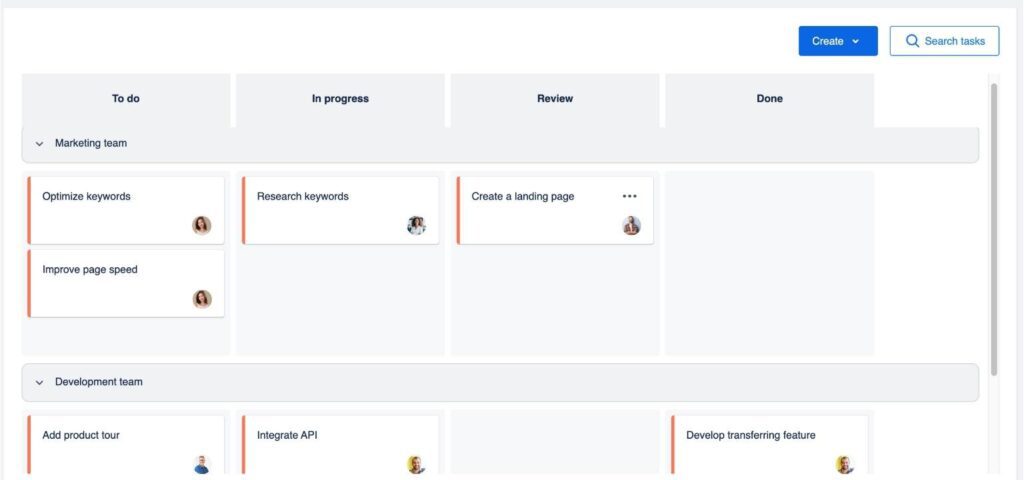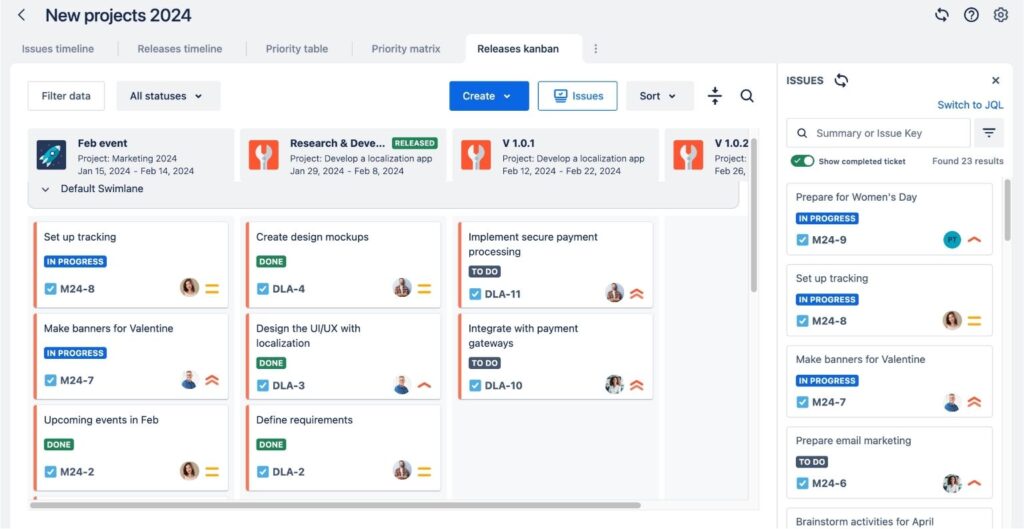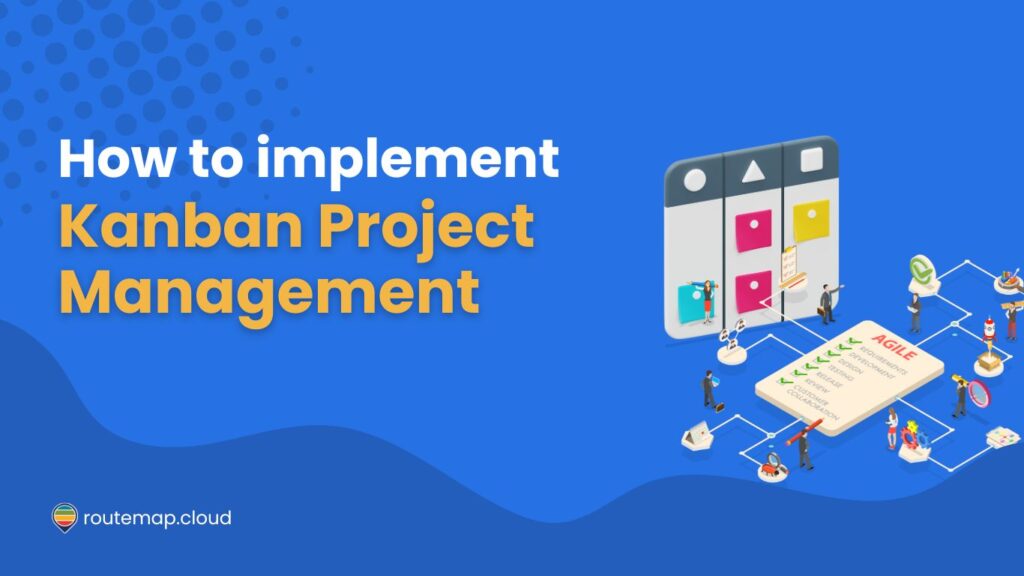Why is Kanban project management the key to success in Agile projects?
According to PMI Pulse of the Profession, around 4% of projects could not finish on time in 2021 with nearly 40% of them going out of budget. Meanwhile, more than a quarter failed to reach their targets.
Therefore, the combination of Agile methodologies with Kanban principles has created a powerful strategy for enhancing project efficiency and adaptability. Together, they form a formidable alliance on visualizing workflow and continuous improvement with a customer-centric approach.
In this article, we will explore the integration of Kanban into Agile frameworks, its benefits, and how you can use Kanban project management to reach Agile project success.
What is Kanban project management?
Kanban project management utilizes the Kanban methodology, offering a distinctive approach to managing projects that applies to organizations of all sizes.
Due to its flexibility and agility, Kanban practices are well-suited for managing various projects. It also means encompassing everything from manufacturing and construction to software development regardless of their complexity or industry background.
For more detailed information, you can read our article about What is Kanban methodology.
How to use Kanban in Agile project and release management
You can implement Kanban for managing projects on a team level to streamline their workflow. Or, Kanban can also be effectively integrated into Agile project management to enhance flexibility, improve visibility, and maintain continuous delivery.
1. Implement Kanban project management on a team level
Here is a great example of how you can manage projects on a team level with Kanban. In this case, we’ll be using Routemap for Confluence.

With Routemap for Confluence, you can quickly create a Kanban to visualize and manage every member’s tasks as cards on the board. Additionally, all members can also communicate more effectively when everyone is acknowledged about the work progress from others.
More importantly, you can freely customize columns and swimlanes on the Kanban board to suit your needs and project requirements. The possibilities are endless, from building a WIP Limits board to making a Project timeline.
2. Implement Kanban project management on a Portfolio level
For most Agile teams, Jira has long been a go-to option for any project across multiple projects and industries.
As teams have mastered Kanban project management on the team level, they will deliver values much more quickly. However, getting the bigger picture becomes increasingly challenging as every aspect of a project starts moving faster.
If more than two teams in your organization are using Kanban, it is difficult to monitor every component of each project. Therefore, it’s time to manage projects on a portfolio level with Kanban. And this time, let’s feature Routemap for Jira – Portfolio Roadmaps, Timeline Gantt-chart & Kanban.

From the image above, you can see that work across multiple projects and teams is visualized nicely on the same Kanban board. This ensures you and your team can break down projects into smaller items for better execution.
Not only that, Routemap’s Kanban for Jira also visualizes task statuses, assignees, and priorities so everyone can have a complete overview of their projects. As a result, no task will be left unnoticed that can affect the overall progress and completion of individual projects.
Benefits of using Kanban project management
Kanban project management offers several benefits making it a popular choice across various industries.
1. Increased efficiency
By visualizing the workflow on a Kanban board, teams can easily identify bottlenecks and inefficiencies in the process. This clear visualization allows teams to focus on reducing wait times and handoff delays between stages, ultimately speeding up the entire process.
As a result, it helps teams quickly identify areas that need attention or adjustment, ensuring that efforts are directed where they are most needed.
2. Flexibility
Kanban is highly adaptable to changes. Since it doesn’t require a rigid structure, teams can adjust their workflow and task priorities on the fly.
As priorities shift, teams can easily add, remove, or rearrange tasks on the board. This level of flexibility is critical in adapting to client demands, market conditions, or internal project shifts, allowing teams to stay aligned with current priorities without extensive planning and re-planning.
3. Improved focus
By limiting the number of active tasks or work in progress (WIP), Kanban project management reduces the cognitive load on team members. This constraint helps prevent multitasking and overburdening, which can lead to burnout and mistakes.

It encourages teams to complete a task before moving on to the next, leading to higher quality results and more thorough completion of each task.
4. Enhanced collaboration
Kanban boards create a central, shared view of the project’s progress. This setup keeps everyone informed and fosters a cooperative environment where team members are more aware of their colleagues’ tasks and challenges.
Besides, this awareness helps organizations align efforts, share resources efficiently, and provide support where needed, strengthening team cohesion.
5. Continuous improvement
The Kanban methodology promotes an iterative process of review and adaptation. Teams are encouraged to hold regular meetings (such as Kanban meetings or retrospectives) to discuss what is working and what is not
This ongoing cycle of reflection and adjustment nurtures a proactive approach to problem-solving and innovation within teams.
6. Faster delivery
Projects can move faster from conception to completion with improved efficiencies and fewer bottlenecks. The constant visibility of progress helps anticipate issues and address them proactively, thus avoiding delays.
Moreover, quicker delivery cycles can satisfy clients and provide competitive advantages by enabling faster responses to market needs.
7. Greater customer satisfaction
The Kanban project management process allows for more frequent updates and adjustments based on customer feedback. This responsiveness ensures that the final product or service is more closely aligned with customer expectations.

Additionally, faster delivery of products can enhance customer satisfaction and loyalty, as clients appreciate rapid and adaptive service.
Conclusion
Implementing Kanban project management in Agile frameworks offers a pathway to enhanced efficiency, adaptability, and collaboration. Moreover, teams can navigate complex challenges with clarity and agility by embracing the principles of Kanban within Agile projects.
With a commitment to continuous improvement and a keen eye on workflow optimization, implementing Kanban into Agile practices makes way to sustained success in today’s dynamic project environments.
Related articles:




